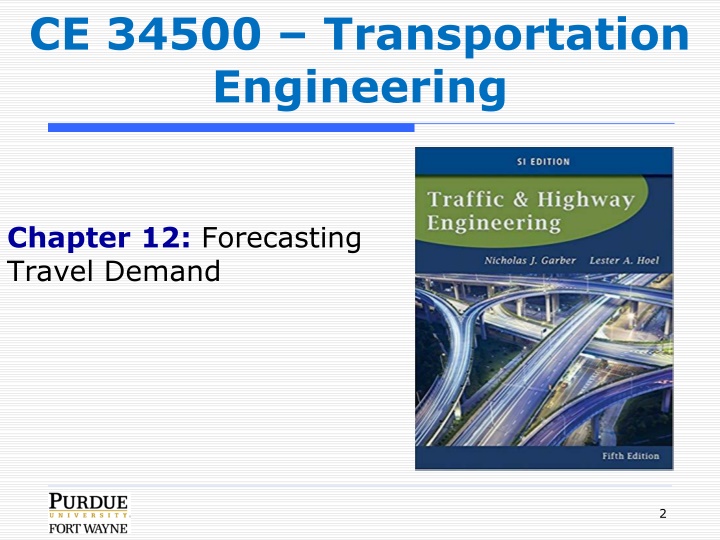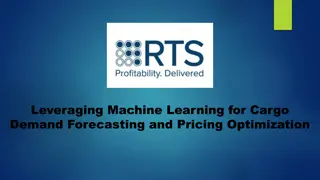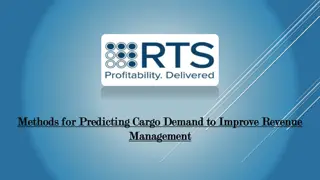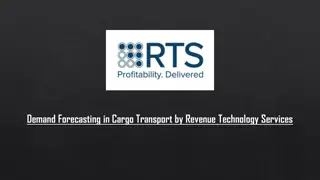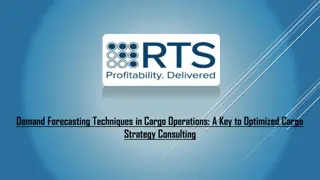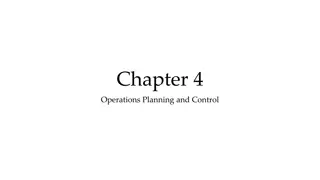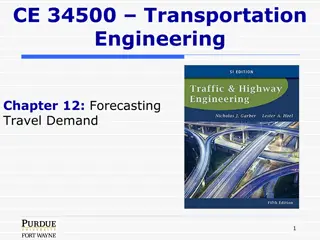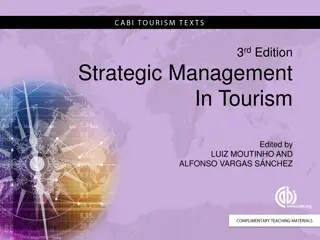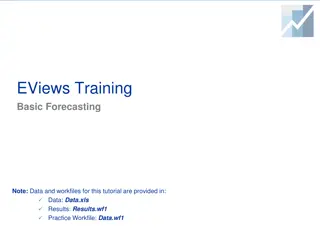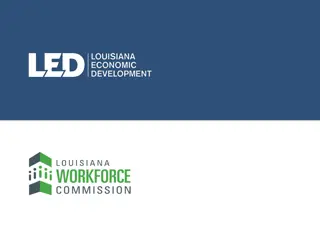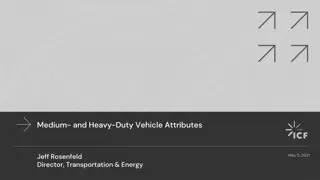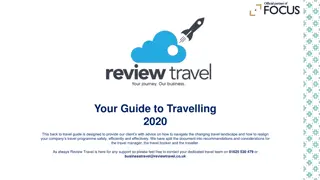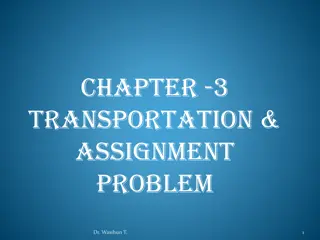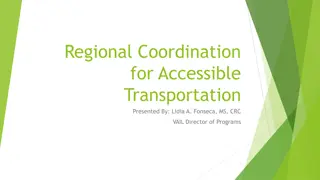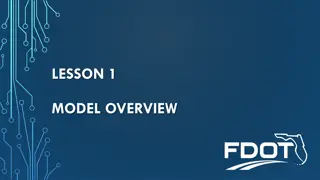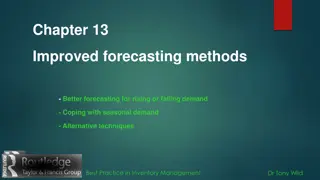Forecasting Travel Demand in Transportation Engineering
This chapter delves into the key concepts of travel demand forecasting in transportation engineering. It covers the 4-step models for trip generation, distribution, mode choice, and assignment. The content explores different types of models, such as automobile and transit, along with estimating procedures for transit trips. Various examples are provided to illustrate calculations for transit trips and the percentage of residents expected to use transit. Additionally, trip interchange modal split models are discussed to determine the percentage of people using transit based on utilities and probabilities.
Download Presentation

Please find below an Image/Link to download the presentation.
The content on the website is provided AS IS for your information and personal use only. It may not be sold, licensed, or shared on other websites without obtaining consent from the author.If you encounter any issues during the download, it is possible that the publisher has removed the file from their server.
You are allowed to download the files provided on this website for personal or commercial use, subject to the condition that they are used lawfully. All files are the property of their respective owners.
The content on the website is provided AS IS for your information and personal use only. It may not be sold, licensed, or shared on other websites without obtaining consent from the author.
E N D
Presentation Transcript
CE 34500 Transportation Engineering Chapter 12: Forecasting Travel Demand 2
4-step Models 1. Trip Generation: How many people travel? 2. Trip Distribution: What are the travel patterns for the study area? 3. Mode Choice: What travel modes are used? 4. Trip Assignment: What trip paths will be followed through the transportation network? 3
Two types of Models 1. Automobile 2. Transit Three types of Transit Estimating Procedures 1. Direct generation of transit trips 2. Use of trip end models 3. Trip interchange modal split models 4
1. Direct generation of transit trips 5
Example 12.8 Determine the number of transit trips per day in a zone, which has 5000 people living on 50 acres. The auto ownership is 40% zero autos per household and 60% one auto per household. 6
2. Trip End models To determine the % of total person that will use transit. 7
Example 12.9 The total number of productions in a zone is 10,000 trips/day. The number of households per auto is 1.8, and residential density is 15,000 persons/square mile. Determine the percent of residents who can be expected to use transit. 8
3. Trip interchange modal split models To determine the % of total person that will use transit. ???????? ????????+ ??????????? ???????= ??????????= 1 ??????? Pauto ij= probability of selecting auto mode for trip from TAZ i to TAZ j Uauto ij = utility of auto mode for trip from TAZ i to TAZ j: f (auto LOS ij, auto cost ij, income i ) Ptransit ij= probability of selecting transit mode for trip from TAZ i to TAZ j Utransit ij = utility of transit mode for trip from TAZ i to TAZ j: f (transit LOS ij, transit cost ij, income i ) 9
3. Trip interchange modal split models Uauto = 1+0.003*Income/1000-0.04*TravelTime- 0.24*Cost Utransit = -3-0.001*Income/1000 -0.04*TravelTime- 0.24*Cost 10
Example 12.11 The utility functions for auto and transit are as follows. Auto: ??= 0.46 0.35?1 0.08?2 0.005? Transit: ??= 0.07 0.05?1 0.15?2 0.005? Where, ?1= ?????? ????,???;?2= ??????? ????,???; C=cost (cents) The travel characteristics between two zones are as follows: T1 T2 C Auto 20 8 320 transit 30 6 100 11
4Th Step: Traffic Assignment Minimum path algorithm 12
